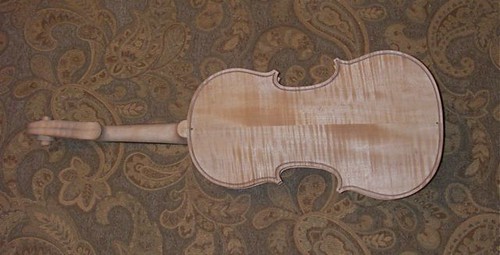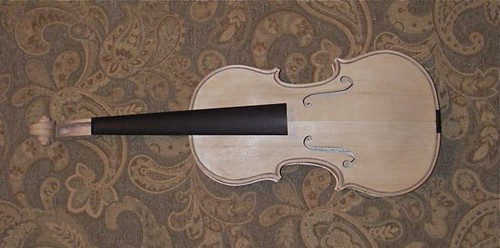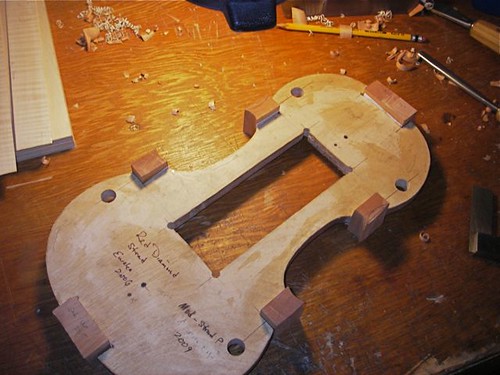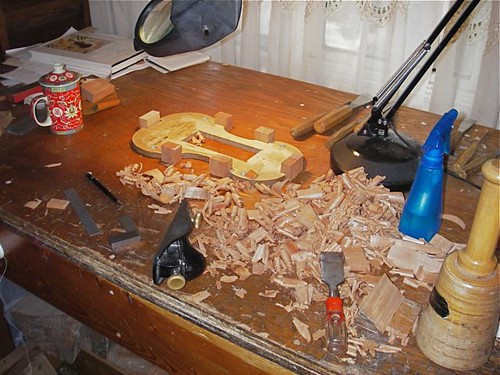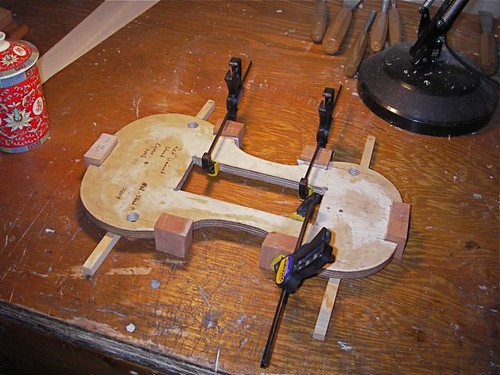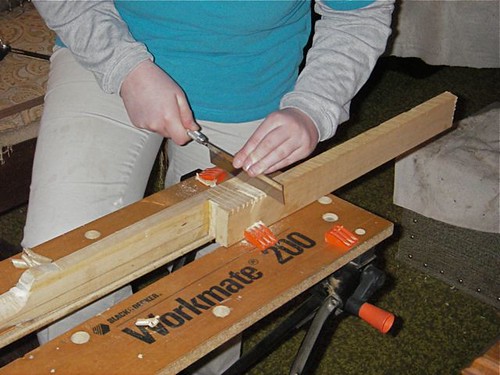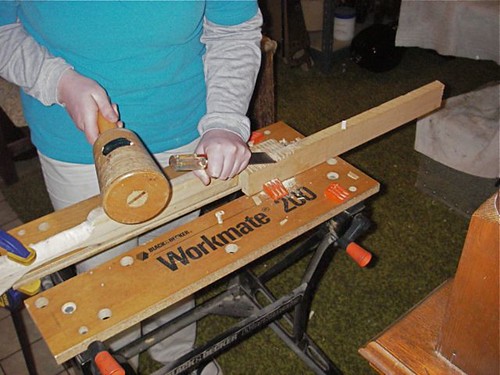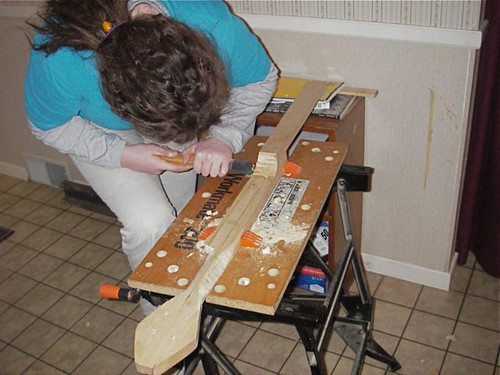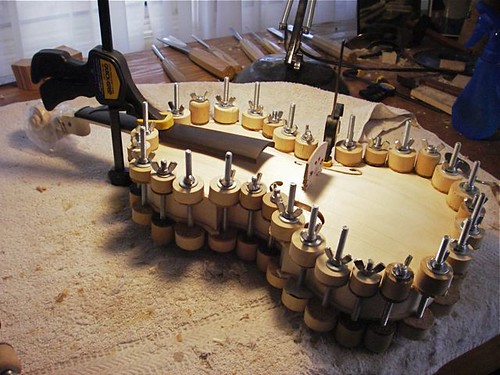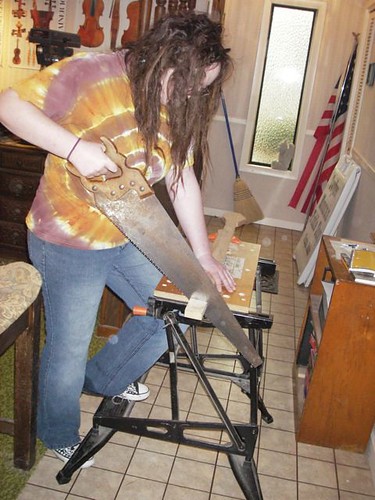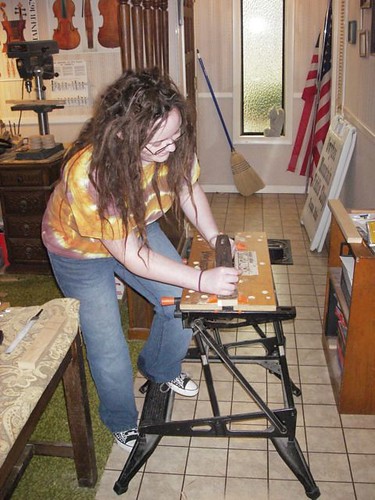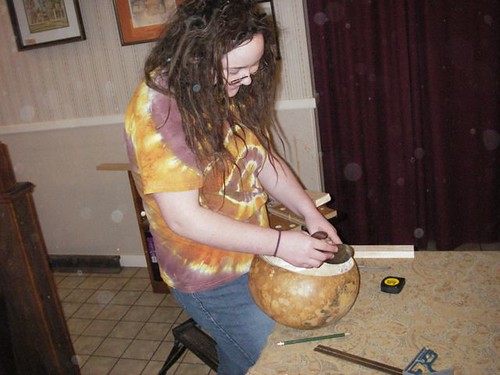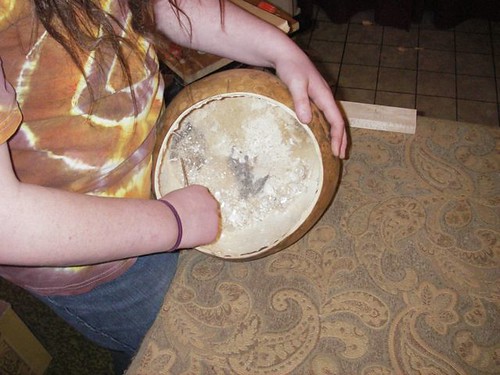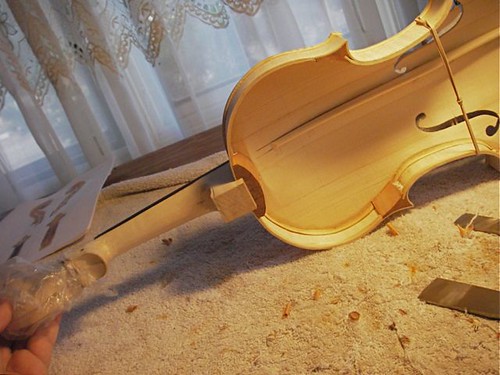
Fitting the neck to the body is a picky chore. You have to get different angles, elevations, distances to work out as you fit the heel of the neck into the neck block. In my previous violins, I have fit the neck to a totally enclosed body, top and back glued to the ribs. Following the advice of a good maker I know through e-mail and the internet, I am fitting this one before gluing the back in place.
I have to say it is much faster , so far. I haven't fit the back yet, but getting the angles, seeing what I was doing, all was much easier.
Here you can see a rubber-band around the body. It's holding a bridge blank in place, a target for my angles and elevations.

Here is the mortise cut and ready for gluing. The neck block, is the redder piece of wood, and you can see the compound angle cut of the mortise. The whiter stripe in the upper-middle of the block is the plug I used to fill the registration holes.
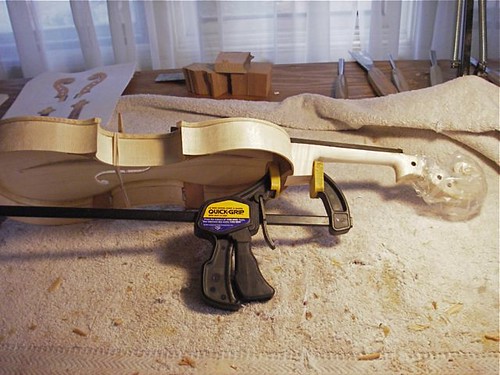
Gluing the neck was very straight-forward. In the past, I've had some difficulty keeping the elevation at the right height while clamping. Here, with my 'target' bridge in place, I can see that the fingerboard is aimed where I want it.
